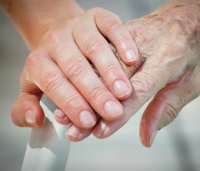Summer is here. Though cold and flu viruses have mainly subsided, the hot weather ushers in new health challenges. Here are a few things you need to know to survive.
Summer is here. Though cold and flu viruses have mainly subsided, the hot weather ushers in new health challenges. Here are a few things you need to know to survive.
The most obvious precaution you should take is to wear sunscreen. “Applying sunscreen should be as much a part of our daily routine as brushing our teeth,” says Michelle Pettit, PA-C, a physician assistant at Northwest Hospital. Though sunscreen should be incorporated into a daily regimen all year round, using it is critical when you are outside – or even just on the other side of a windowpane.
Yes, though glass blocks UVB rays that cause sunburn and skin cancer, UVA rays – once thought to only cause premature aging but now known to also cause cancer – can penetrate windows. Sean Gunning, M.D., a dermatologist, explains the hidden impact of UV exposure: “There is a famous picture of a French schoolteacher who spent her career with the right side of her face exposed to the window. The exposed area of her face appeared years – if not decades – older and had greater wrinkling and dyspigmentation.”
To protect against UVA rays as well as UVB, you’ll need a sunscreen that’s labeled as “broad spectrum,” which blocks 90 percent of UVA rays and has an SPF of at least 15. (SPF only measures effectiveness at blocking UVB rays.)

Because the sun’s closer position to our hemisphere does more than damage skin, summer is also a time to stay cool and hydrated. One should drink more water and juice and stay away from beverages with caffeine or alcohol, which dehydrate. When the heat index hits the triple digits, you should stay indoors in air-conditioned environments, even if that means escaping to a movie theater or mall. Under extreme hot weather conditions, Baltimore city and Baltimore County open cooling centers where people can take advantage of cool air and water.
Failure to keep cool enough can cause heat exhaustion, which can in turn lead to life-threatening heat stroke.
“Heat stroke is a medical emergency that arises when people are out in hot, humid weather, and it is marked by a body temperature of over 104 degrees and neurological symptoms,” says Tanveer Gaibi, M.D., medical director of Northwest ER-7. “The old and the young are the most susceptible to it.” In addition to an elevated temperature, signs of heat stroke might include trouble thinking, confusion, and even hallucinations and seizures. In the presence of these symptoms, 911 should be called immediately.
Gaibi stresses that it’s important to recognize the signs of heat exhaustion and to take steps to prevent heat stroke. Symptoms of heat exhaustion include fatigue, weakness and possibly vomiting. In this case, the body needs to be cooled down.
“Cold ice packs can be placed in the armpits and on the back of the neck,” advises Gaibi. “A cold shower can also work, as does misting the body with water and then sitting in front of a fan.”
The sun is not nature’s only scourge that challenges full summertime enjoyment. Because of the mild winter, insect populations are expected to be larger than normal this year. According to John Cmar, M.D., Sinai internist and infectious disease specialist, deer tick season started three to four weeks early, bringing the potential threat of more Lyme disease.
“Deer ticks are like slow mosquitoes,” says Cmar, noting that whereas a mosquito will complete a “meal” in about a minute and fly off, a tick will stay latched onto its host for a matter of days. Only some deer ticks carry the bacterium that causes Lyme disease, though it’s not known what percentage do. However, even if a tick has the potential to infect a human, it takes several hours to do so. That’s why it’s important to check your body for ticks daily, and if they are found, remove them and disinfect the area.
“When a deer tick has been latched on for less than 36 hours, the likelihood of Lyme bacteria being transferred is very low,” Cmar says. Ticks swell up with blood and get larger as they feed, so the size of the tick when it is discovered correlates to how long it has been attached. “The Infectious Diseases Society of America has guidelines for doctors that are based on the size of a tick. If a tick is large enough to denote it’s been attached for 48 hours or longer, an antibiotic is given to prevent Lyme disease.” (Cmar notes that the patient isn’t tested for Lyme disease at this point because it takes about a month for Lyme antibodies to show up in human blood; by then, the person would be quite sick without having had the antibiotic.)
Ticks and other insects carry diseases besides Lyme, so it’s important to prevent bites in the first place. Cmar says he doesn’t camp in areas where there are known deer ticks. Of course, that can be anywhere there are deer, even your own backyard. Wearing long sleeves and pants is the best way to prevent tick bites, and Cmar says to be safest, pant legs should be tucked into socks. That’s because ticks tend to crawl up long blades of grass and jump from them into their next victim’s ankles. He also advises wearing DEET on one’s clothing (but not on the face or hands). While DEET won’t actually kill ticks, they despise its smell, making the human wearer no longer tasty. One can also use permethrin spray on clothing, which will kill ticks on contact.
Armed with these tips, we wish you a happy, safe and healthy summer!
-Holly Hosler









